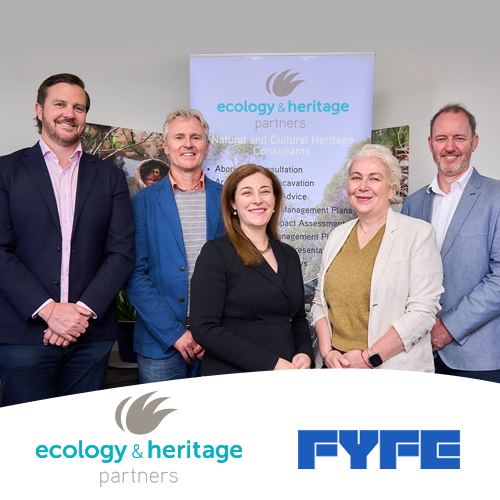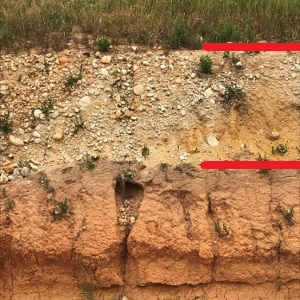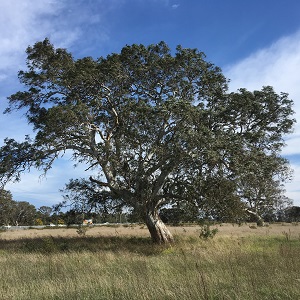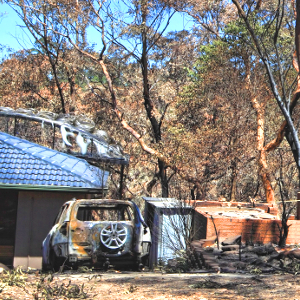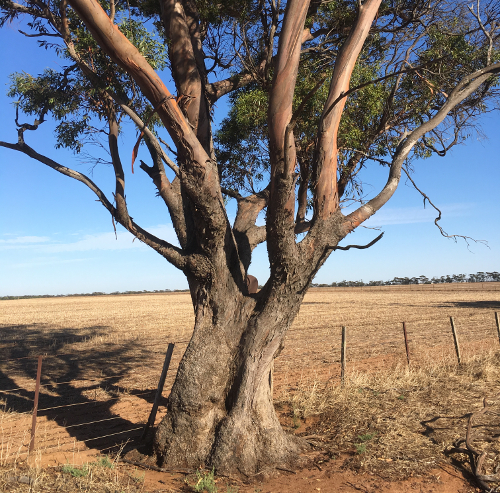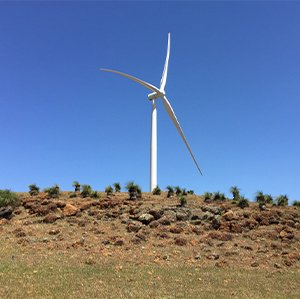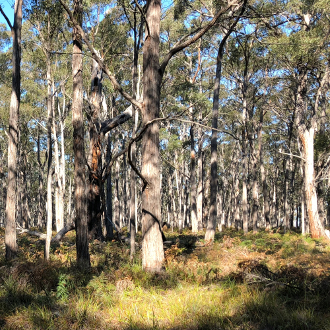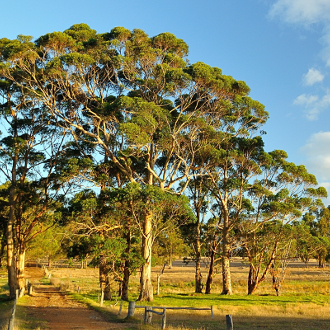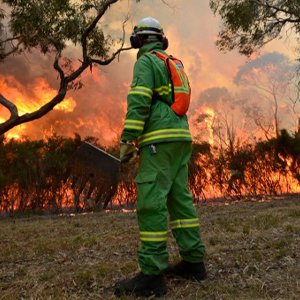Six Steps to Stress-Free Solar Farm Approvals
Ecology and Heritage Partners have been privileged to assist a large number of renewable energy projects obtain approvals across Australia. This includes over 40 solar farm projects, many of which are on constrained sites.
Constrained sites may have remnant vegetation or unfavourable soils, or they may be unencumbered yet at a significant distance from suitable connection to the electricity grid, requiring construction of long transmission lines.
In this update we share with you our top suggestions for stress-free solar farm approvals in Queensland, Australia's busiest solar state.
1. Stick to Category X Vegetation
Category X vegetation is vegetation that is not regulated under the Vegetation Management Act 1999 (white areas on the regulated vegetation management map). There may be some engineering challenges to design PV tables to fit around regulated vegetation, but avoiding clearing will assist with minimising the potential for a referral to the Department of Natural Resources and Mines (DNRM) and hence the possibility of an RFI (Request for Further Information).
DNRM need to be satisfied that clearing of regulated vegetation cannot occur under existing exemptions once the infrastructure has been constructed. To this point, set back PV tables and other infrastructure at least 20m or 1.5 times the height of the dominant canopy height of adjacent vegetation from the edge of regulated vegetation.
2. Consider several connection options to the grid
Connecting the solar project into the existing electricity grid can take many forms and may involve constructing new transmission lines. Often the preferred line route requires clearing of regulated vegetation as it appears to be the easiest option. However, clearing of regulated vegetation can take time and will likely require additional approvals and permits to proceed.
Other options, such as upgrading existing lines, should be considered as although the upgrade option may appear to be more expensive initially, any differences are likely to be offset with an easier application process and reducing the potential for provision of environmental offsets.
3. Consider a Property Map of Assessable Vegetation (PMAV)
A PMAV allows a landholder to change the regulated vegetation management map to account for deficiencies in the mapping (e.g. cleared areas being mapped as remnant vegetation, incorrect regional ecosystem code) or to account for finer scale mapping. A PMAV is a voluntary process, but one that can result in increasing the area of Category X vegetation or changing the status of threatened remnant vegetation (‘endangered’ or ‘of concern’) to a least concern status.
It is important to note that while DNRM must consider the boundaries of vegetation as shown on the vegetation management map (incorrect or otherwise), in terms of calculating impacts from the development, they should have regard to finer scale mapping provided by a suitably qualified and experienced ecologist as part of the development application.
Should a PMAV be subsequently lodged, it will be assessed as a priority by DRNM as it is associated with a current development application.
4. Avoid significant impacts
Avoiding clearing remnant vegetation will, in most cases, avoid the likelihood of significant impacts on threatened species habitats and/or threatened ecological communities. However, there are several threatened species and communities that can be present on the site and exist within regrowth vegetation or even ‘cleared’ land. Some examples are provided below:
- Ornamental Snake Denisonia maculata – listed as vulnerable. The Ornamental Snake is a small, venomous snake that occurs throughout central Queensland. Although associated with Brigalow vegetation, it is also present in areas where this community once occurred (or in regrowth vegetation), and particularly within areas of small wetlands on cracking clay soils (e.g. Gilgais).
- Brigalow Acacia harpophylla threatened ecological community – listed as endangered under the Commonwealth Environment Protection and Biodiversity Conservation Act 1999 (EPBC Act). Brigalow once occurred across vast swathes of inland Queensland and has now been significantly reduced in area. Identification of this community within a site must take into account areas of regrowth vegetation that ‘retain the structural elements and species composition of the undisturbed community’. For the most part, such vegetation won’t be mapped as regulated vegetation.
- Natural Grassland threatened ecological community – listed as endangered under the EPBC Act. Natural Grasslands have suffered a similar fate to Brigalow across central Queensland. A Natural Grassland is difficult to map due to the absence of trees and level of disturbance that can occur to the community meaning that it is no longer considered as part of the threatened ecological community.
A suitably qualified and experienced ecologist will be able to review the pre-clearing vegetation mapping and soils mapping, and determine the likelihood of these habitats or communities occurring within a site. In most cases, this will require a field survey to confirm the presence of the threatened species habitat and/or ecological community.
5. EPBC Act – to refer or not to refer?
Although not required for the development application, failure to understand your responsibilities under the EPBC Act can significantly delay the project.
Referral of the project under the EPBC Act must occur if the project will have or is likely to have a significant impact to a matter of national environmental significance (e.g. threatened species, communities).
Limiting development to Category X areas is a good start, however as demonstrated above, there are some matters that can only be assessed through a field survey and completing an impact assessment.
Even if the project is unlikely to result in a significant impact (and hence does not need to be referred), referral can be a risk minimisation strategy to insulate the project from changes to the threatened ecological community and species listings prior to the project starting construction. For example, a change to the status of Ornamental Snake from vulnerable to endangered may then mean that the project is likely to have a significant impact to the species or its’ habitat and referral is then required. Such a change would mean that the project could not begin construction until the referral has been submitted and assessed by the Department of the Environment and Energy.
6. Ensure you are getting the best ecological advice
Choosing the right ecologist is an important step in achieving the best outcomes for your project. A good ecologist will ensure that all relevant development constraints have been identified up front, and options have been provided to minimise risk and smoothly progress the project.
Here are key questions to ask before engaging an ecologist on your solar farm project:
Are they suitably qualified and experienced?
Most councils and state departments will only accept ecological reports from someone who holds tertiary qualifications from a recognised higher education institute and is experienced in a relevant field.
Do they have local knowledge?
In terms of assessing flora and fauna on a site, it is essential that the ecologist is familiar with the region’s biodiversity and understands the nuances of assessing significant vegetation communities, identifying threatened plants or habitats for threatened fauna that are unique to the region.
Do they have good relations with local and state government officers?
Previously, many councils were struggling to assess applications for large-scale solar farms (see Clare Solar Farm). With the number of applications now being processed this is less of a concern, however the ecologist will be able to assist assessing officers with the likely impacts from construction and operation of the project.
Are they part of an established team?
The level of work involved in preparing documents for a solar farm project is not the same as for a wind farm or other major project and consequently the level of reporting can be reduced.
A good consultant team such as an ecologist and town planner, who have worked together previously, understand the level of reporting required and will advise what is required to support the development application. Sometimes this may include a desktop assessment only or an ecological report may not be required at all.
Are they certified?
At the present time, ecologists do not have to be certified by a professional body to prepare and lodge reports. However, this is changing and the new Western Downs Planning Scheme (covering Dalby, Chinchilla and Miles) prefers that ecologists submitting reports are Certified Environmental Practitioners (CEnvP).
The CEnvP scheme is an independent certification program that aims to ensure that environmental practitioners act professionally and ethically when conducting work.
The CEnvP Ecology Specialist certification recognises a higher level of experience and ecologists who have this certification can show 10 years’ experience in their field.
Ecology and Heritage Partners have been privileged to assist many new wind and solar energy projects across Australia, including over 50 complex wind farm projects and 40 solar farm projects.
Further Information
If you have any questions, or would like to discuss your solar energy project, please contact us on 1300 839 325.
The above article is provided for general information only and should not be relied upon for decision making processes. Each project will require its own scope of work to accurately identify ecological values occurring or potentially occurring within the project site, through the engagement of a suitably qualified and experienced ecologist.
